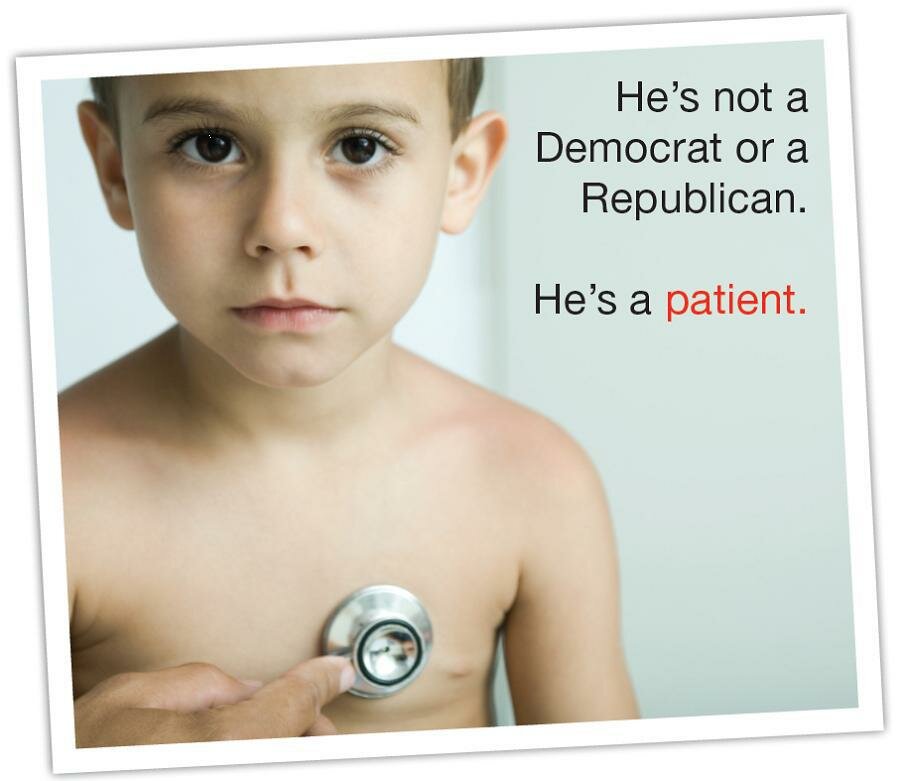The Top 10 Benefits of the Patient Protection and Affordable Care Act (Obama Care)
Suggested by SMSIn the development and implementation of any new law there will always be detractors. This is especially true in a situation where an Act, such as the Patient Protection and Affordable Care Act, is aimed squarely at businesses as powerful as that of the Health Insurance industry. Yet, the opposition that carries significant political might and has the resources to fight the reforms of the government has had difficulty maintaining a case against the revisions. This is largely due to the fact that the Act has so many positive and well prepared aspects. In order from tenth to the most positive benefits of the Patient Protection and Affordable Care Act, the list following addresses the strengths of this legislation.
10. Primary Care Providers
In his proposal for a Second Bill of Rights, Franklin D. Roosevelt proposed, “The right to adequate medical care and the opportunity to achieve and enjoy good health”. Similarly, Article 25 of the Universal Declaration of Human Rights states that, “Everyone has the right to a standard of living adequate for the health and well-being of himself and of his family”. To fulfill the spirit of these statements and meet the needs of all Americans, wherever they live, an expansion of the provision of Primary Care workers is vital. Strength of the Patient Protection and Affordable Care Act is the breadth of its vision. As well as recognizing the financial considerations that need to be addressed, there are also practical aspects such as the shortages in Primary Care Providers throughout the country. The Act aims to increase the number of Primary Care Providers by up to 16,000 health professionals in the next five years. The narrow-minded view of Primary Care Providers recognizes only doctors as essential to the care and well-being of patients, but the Act has expanded this view to include the provision of nurses and public health workers. This has also included the growth in nurse practitioner-led clinics, which, in addition to the establishing of training opportunities for up to 500 primary care physicians, has presented a well-rounded program for the development of more Primary Care support in all communities. Through incentive programs including training support, tax benefits, financial assistance for students and increased accessibility to health care education, the Patient Protection and Affordable Care Act encourages and establishes health care for all members of every community across the country.
9. Consumer Information
Information is power and consumer information increases the ability of the consumer to make sound and considered decisions. The Patient Protection and Affordable Care Act will aid in developing programs that will provide opportunities for consumers to gain assistance in dealing with concerns arising from transactions with Insurance companies. Should these matters reach levels of conflict where the consumer is faced with the overwhelming weight of the Insurers resources, the Act also hopes to establish ombudsman programs. These will act as advocate for the consumer in cases of complaint, appeal and other areas of administrative difficulty. Assistance in such matters, but to a lesser degree, is already available in some states, but through grants offered in the function of this Act, it is hoped that all states will be able to enhance the Consumer Assistance Programs or to establish them if they do not exist yet. This is an important and insightful feature of the Patient Protection and Affordable Care Act as it recognizes that change is only successful if it has the support and understanding of those it is designed to help. Moreover, the creation of Consumer Information services is an effective means of policing the behavior and adherence of Insurers to the Act.
8. Coverage for the Uninsured with Pre-existing Conditions
Almost half of the personal bankruptcies that occur in the U.S.A. are associated with costs incurred as a part of health care and treatment. This degree of financial distress is often the result of the accumulated impact incurred because people are unable to gain insurance for pre-existing conditions. Through the Pre-Existing Condition Insurance Plan, a U.S. citizen who has been uninsured for at least six months and has been denied health insurance on the basis of a pre-existing condition can gain coverage. This program also extends to those residing in the United States legally. However, this program is not a long-term solution. In 2014 insurers will be required by law to cover adults with pre-existing conditions and the Pre-Existing Condition Insurance Plan will no longer be required. Individuals will then be able to access cost effective options through Exchanges, that is, federally subsidized insurance, in the same manner as members of Congress. This feature of the Act will provide greater security for many areas of the Health Care industry and will assist in reducing the financial burden of illness and injury.
7. Prevention Benefits
Prevention is better than a cure. Every mother knows it, every child hears it and, yet, almost every Insurance Company wanted to charge extra for it. With the advent of the Patient Protection and Affordable Care Act procedures and screenings for prevention of illness must be covered without additional costs, when supplied by a network provider. The lists of preventions are specifically designed to meet the needs of men, women and children. As well as addressing the screenings for conditions, such as diabetes, osteoporosis and depression, there is support for lifestyle related issues. These include, obesity, alcohol misuse and tobacco use and often incorporate counseling to address potential hazards to health. Particularly in the list of children prevention services, but also where appropriate in the support of adult health, there are a number of immunizations and vaccinations that provide a greater basis for healthy living. These include Hepatitis, Measles and Influenza, as well as the standard childhood vaccinations for Diphtheria, Tetanus and Pertussis. At the side of most people suffering from illness, there will be a parent, relative or friend wishing there was something that could have been done to prevent their anguish. The Act now provides the opportunity to fulfill this wish and to reduce dramatically the instances of preventable illness.
6. Closing the Drug Benefit Gap
Access to high standard medical care is an essential part of any public health system, but similarly important is access to ongoing quality medicines. Yet many Americans on Medicare drug plans, who aren’t recipients of Extra Help, can only afford the necessary drugs for their health up to a certain point where they are met by a coverage gap or “donut hole”. To address this shortfall the Patient Protection and Affordable Care Act provides a fifty per cent manufacturer paid discount on brand-name drugs covered by the scheme. Generic drugs covered by the scheme will attract a fourteen per cent discount. The full cost of both brand-name and generic drugs covered goes towards the out-of-pocket expenses of the patient, which, in turn, helps them through the gap more quickly. The plan behind this aspect of the Patient Protection and Affordable Care Act is to close the Coverage Gap for everyone on a Medicare drug plan by the year 2020. Achieving this goal will not only ease the cost of health care, but it will make valuable long term support available to everyone.
5. Protection in Times of Emergency
In our most vulnerable times, the compassion of a Health Insurer is essential to our ability to deal with the distress of the moment and lay the foundation for a speedy recovery. This is most evident in our being able to receive prompt and high quality care, in instances of emergency. Unfortunately, this level of support has not always been forthcoming from some Insurance companies. Demands, including a referral for treatment by an obstetrician or gynecologist, have made women reluctant to seek out appropriate care and this restriction was recognized by three quarters of practitioners as having had a significant detrimental effect on the well-being of their patients. Similarly, limitations on the specific doctors that could treat patients meant that, should those doctors not be available, treatment in an Emergency Room would be delayed or even refused for need of approval by the Insurer. The only alternative would be to assume the costs of the treatment personally and bear the financial burden that would follow. Under the Patient Protection and Affordable Care Act such barriers to urgent health care are removed. Insurers are prohibited from making such demands, which frees up emergency services for consumers and allows doctors and other health care professionals to provide the level of care that their vocation demands.
4. Banning Lifetime Limits
Insurance has been described as a negative wager. You actually lay a bet in the hope that you never win and have to collect because to collect means that you will be sick or injured. Yet, everyone knows that when you make a wager on a football game, you don’t throw in a clause that says that if the other team wins, you will only pay up to a certain value; you fulfill your commitment. However, Insurance companies have been hedging on their bets as they have included a clause that limits the amount of coverage they will provide. They have been able to say that if a client’s health costs exceed a certain amount the Insurers can stop paying. This unconscionable practice has led to sufferers of severe conditions having their benefits terminated midway through their treatment. By prohibiting Lifetime Limits on Coverage, the Patient Protection and Affordable Care Act has brought to an end the cruel and heartbreaking policy. Honest and sincere customers will be protected from the distress of having their financial support withdrawn in the course of critical treatment
3. Community Health Centers
The place of Community Health Centers in the structure of the Health Care system cannot be overlooked. They provide a focus and resource for a range of Health services relating to the young, the underprivileged and the old. A major aspect of the Patient Protection and Affordable Care Act is the establishing of up to 350 new Community Health Centers. The vast majority of the money allocated to this program is destined to provide Centers in area designated as medically under serviced. While the intention of removing obstacles to secure and fair health insurance is admirable and highly important, another significant purpose of the Act is to bring both preventative health support and high quality medical care to those who have been neglected. By making Community Health Centers more accessible, the one in seventeen people throughout the country who make use of the resources can be confident of ongoing assistance. As a by-product of this feature of the Act, the building projects required to deliver the Community Health Centers will create employment and training for workers in some of the most disadvantaged communities in the country.
2. Children Face No Pre-Existing Condition Exclusions
Despite the best efforts of marketing and publicity executives to convince the consumer that Insurance companies have hearts and consciences, few things are as destructive to this image as their refusal to insure children born with a medical condition or those who develop one early in life. The repercussions of such reprehensible policies are far reaching and distinctly unfair. Data gathered has illustrated that the children of families without insurance are significantly less likely to gain the preventative care than other children. The prospect of a well-baby checkup is simply an opportunity to discover that the child has a condition that, due to financial circumstances, can’t be treated anyway. Many of these families also avoid immunization and, as a consequence of these omissions, the children have double the likelihood of absenteeism from school. They also are far more prone to hospitalization, often for conditions that could have been detected and avoided through the normal processes. Through the Patient Protection and Affordable Care Act, Insurers can no longer deny coverage to children on the grounds of pre-existing illnesses or conditions. This extends to anyone under the age of nineteen and applies to both full coverage and the limiting of benefits that previously could have restricted access to vital, but expensive treatments like chemotherapy and radiotherapy.
1. Financial Discrimination
In any aspect of society, the concept of discrimination is abhorrent. But when the shadow of social favoritism is cast across the basic human right of health care, there are echoes of the injustices and cruelty that resound from centuries past. While we believe that, as a society, we have moved past the issues of racism, sexism and religious intolerance, there are still Insurers that actively discriminate on the basis of financial status. High wage employees have been favored through eligibility rules for coverage and this practice has made it difficult for those most in need of support. The Patient Protection and Affordable Care Act could discourage any such discrimination and this might help secure the provisions of health care to less privileged groups in the United States.



















